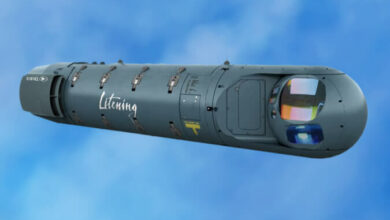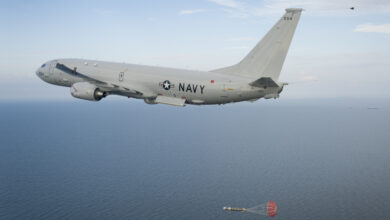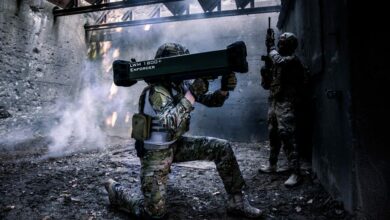Saab-Boeing Ground-Launched Small Diameter Bomb strikes sea target at 130 km
Saab and Boeing conducted a successful long-range test-firing of the Ground-Launched Small Diameter Bomb in Norway, marking a step forward in the adaptation of the precision-guided glide bomb for surface launches.
The test-firing, in which the objective was to hit a target in the sea 130 km (81 miles) from a launcher in a custom made 20-foot container, took place at the Andøya Test Center in Andenes, Norway, on September 26, Saab said in a Monday, October 14 release.
RELEASE: Saab has together with @BoeingDefense conducted a successful test firing of the Ground-Launched Small Diameter Bomb. https://t.co/DKCRZ85WCT pic.twitter.com/JB8qGjijBJ
— Saab AB (@Saab) October 14, 2019
“In collaboration with Boeing, we have developed a highly competent system that offers high precision at long range,” said Görgen Johansson, Head of Saab business area Dynamics. “We see a lot of potential in the GLSDB, since it provides armed forces around the world with a long range artillery capability, which there is a great demand for.”
The partnership between Saab and Boeing to develop the weapon system was signed in August 2014 and it was first unveiled and tested the following year. A GLSDB engaged a moving target at a distance of 100 km in a 2017 test.
The system integrates Boeing’s Small Diameter Bomb glide bomb with the M26 rocket motor used in the M270 multiple launch rocket system.
Saab says the GLSDB system stands out because of its ability to strike targets that cannot be reached by conventional direct and indirect fire weapons.

The system is launcher independent, enabling it be fired from any launcher capable of using the M26 launch pod container including HIMARS, M270 and ChunMoo. The containerized solution tested can also be used onboard ships.
“Boeing and Saab bring together deep knowledge of precision weapon systems and the ability to rapidly integrate and test solutions,” said Cindy Gruensfelder, vice president of Boeing Weapons. “Combining our companies’ expertise, experience and resources have resulted in an advanced, cost efficient, supportable global rocket artillery solution.”

Precision stand-off strike capability
The GBU-39 Small Diameter Bomb 1 is a 250-pound precision-guided glide bomb with a stand-off range of more than 74 km (40 nautical miles) when dropped from an aircraft. It uses an advanced anti-jam GPS-aided inertial navigation system to attack fixed or stationary targets, and carries a multipurpose penetrating blast-and-fragmentation warhead with a programmable fuze.
The system was originally designed to enable aircraft to carry a higher number of smaller, more accurate bombs, and many U.S. aircraft can carry a pack of four GBU-39 SDBs in place of a single 2,000-pound bomb. The GBU-39 was launched from F-22s to strike Taliban drug factories in Afghanistan in November 2017.
More than 20,000 SDBs have been produced and 10,000 have been used in combat, according to Saab. The weapon is in service in the militaries of 15 states, including the U.S. Air Force and the Norwegian Air Force.
The GBU-39B/B Laser Small Diameter Bomb variant integrates the JDAM’s semi-active laser, enabling the bomb to hit targets moving at up to 80 km/h (50 mph). It has been fielded by the U.S. Special Operations Command since 2014, and in December 2017, Boeing was awarded a $10.5 million contract to produce Laser Small Diameter Bombs for the U.S. Air Force.
GLSDB is compatible with both the standard weapon and the laser-guided variant.
In September Boeing was awarded a $280 million integration and engineering support contract for the Small Diameter Bomb I.
A third variant of the glide bomb, Raytheon’s GBU-53/B Small Diameter Bomb II, has been rebranded “StormBreaker.” It adds a tri-mode seeker that enables radar and infrared homing, as well as semi-active laser guidance, and reportedly features target recognition.
Boeing awarded $280 million Small Diameter Bomb integration and support contract











